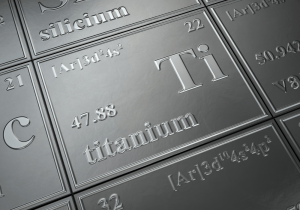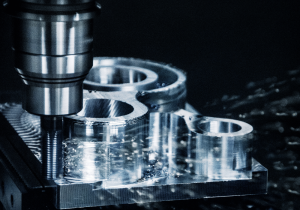Precision is no longer a luxury in modern manufacturing; it’s a necessity. High-precision machining has emerged as a pillar of innovation, driving forward industries that depend on extreme accuracy and quality. Simply put, it ensures that materials and components are engineered to exact specifications, often with tolerances within a few microns.
Historically rooted in traditional machining techniques, precision machining has benefited from leaps in technology, evolving from rudimentary lathes to the sophisticated CNC systems we rely on today. This progress has enabled manufacturers to meet the demanding quality standards of industries such as aerospace, medical devices, and semiconductors. For businesses looking to stay competitive in this high-stakes environment, precision machining is a tool for innovation and reliability.
Key Factors in Achieving High Precision
 The pursuit of high-precision machining begins with careful consideration of the materials being used. Material properties such as hardness, strength, and conductivity can significantly influence machining outcomes. For instance, aerospace-grade titanium demands specialized cutting tools and techniques to maintain consistency due to its hardness and reactivity to heat. On the other end of the spectrum, soft metals like aluminum allow for faster machining but require extra attention to avoid deformation and burrs. Selecting the right material is foundational for achieving the desired level of precision.
The pursuit of high-precision machining begins with careful consideration of the materials being used. Material properties such as hardness, strength, and conductivity can significantly influence machining outcomes. For instance, aerospace-grade titanium demands specialized cutting tools and techniques to maintain consistency due to its hardness and reactivity to heat. On the other end of the spectrum, soft metals like aluminum allow for faster machining but require extra attention to avoid deformation and burrs. Selecting the right material is foundational for achieving the desired level of precision.
Another critical factor is the machinery and tools employed in the process. Advanced CNC machines, capable of operating along multiple axes simultaneously, are pivotal for precision machining. Combined with sophisticated tooling like diamond-coated drill bits and end mills, these machines achieve immaculate surface finishes and meet tight tolerances. Furthermore, the integration of computer-aided manufacturing (CAM) software allows for optimized toolpaths, reducing errors and maximizing efficiency.
However, even the most cutting-edge technology requires human expertise. Skilled technicians and engineers play a central role in interpreting CAD designs, monitoring machining processes, and ensuring quality control. Precision machining demands not just technical know-how but also the ability to troubleshoot and address issues such as tool wear or instability during operations. The synergy between human skill and technological advancement encapsulates the essence of high-precision machining.
Techniques and Technologies in High-Precision Machining
One of the cornerstones of high-precision machining is CNC machining, which stands for Computer Numerical Control. With its ability to process complex geometries across multiple axes, CNC machining has revolutionized the manufacturing of intricate components. Its adaptability, from producing prototypes to full-scale production runs, makes it invaluable for industries requiring repeatable precision.
Beyond CNC machining, electrical discharge machining (EDM) has ushered in new possibilities for manufacturing intricate designs with tight tolerances. EDM utilizes electrical discharges to cut through materials without direct contact, making it ideal for delicate or hard-to-machine materials like tungsten or tool steel. The precision achieved by EDM is unparalleled, especially for applications demanding intricate cavities or sharp edges.
Laser cutting is another groundbreaking technology that offers precision and versatility. By using concentrated beams of light, laser cutting achieves detailed designs with minimal thermal distortion. It’s particularly useful for industries that require minimal material waste while maintaining high levels of accuracy—for instance, cutting electronic circuit boards or creating decorative components for consumer products.
Applications of High-Precision Machining
High-precision machining serves as the backbone for critical industries like aerospace and defence. From turbine blades for jet engines to missile components, aerospace relies on precision not only for performance but also for safety. Components machined for aerospace applications often conform to international standards, ensuring reliability in high-stakes environments.
The medical device industry is another significant beneficiary of high-precision machining. Surgical instruments, prosthetics, and implantable devices require not only accuracy but also strict adherence to biocompatibility standards. High-precision machining ensures complex designs, such as the threading or surface treatment of screws for orthopedic implants, are executed flawlessly.
On the electronics and semiconductor front, high-precision machining contributes to miniaturization and improved performance. Manufacturers depend on techniques like EDM to create microelectronic components, often with features as small as a few microns. The demand for precision in this field drives innovation in not only tooling but also process control.
Advantages of Using High-Precision Machining
 The most apparent advantage of high-precision machining is the enhanced accuracy it delivers, which translates to better product quality. By adhering to tight tolerances, manufacturers can ensure consistency and eliminate defects, resulting in superior product reliability. This level of accuracy also minimizes material waste, as components are machined to exact requirements, leading to cost savings over time.
The most apparent advantage of high-precision machining is the enhanced accuracy it delivers, which translates to better product quality. By adhering to tight tolerances, manufacturers can ensure consistency and eliminate defects, resulting in superior product reliability. This level of accuracy also minimizes material waste, as components are machined to exact requirements, leading to cost savings over time.
Apart from physical accuracy, precision machining plays a direct role in improving product performance. For example, a medical implant that fits perfectly or an aerospace turbine with optimized aerodynamics does more than meet specifications; it elevates functionality. End-users benefit from products that perform at their peak, enhancing customer satisfaction and loyalty.
Cost savings through optimized production processes are another significant advantage. By utilizing advanced tools and techniques, precision machining reduces instances of rework, shortens production times, and avoids costly errors. For many organizations, these benefits make high-precision machining not just a manufacturing preference but a strategic investment.
Challenges in High-Precision Machining
Despite its numerous advantages, high-precision machining is not without its challenges. One of the primary hurdles is managing thermal expansion and vibrations caused during machining processes. Even minor fluctuations in temperature or machine stability can lead to deviations in precision, ultimately affecting product quality. Advanced cooling systems and vibration-dampening mechanisms are often employed to address these issues.
Another challenge is managing tool wear and tear. High-precision machining often involves repetitive processes and hard-to-machine materials, leading to quicker tool degradation. Ensuring the continued sharpness and reliability of tools is key to maintaining consistent results. Regular tool maintenance and the use of wear-resistant materials like carbide or diamond play a crucial role in mitigating this issue.
Quality control is also a top priority. With tolerances often measured in microns, ensuring that every component meets specifications requires rigorous inspection protocols. Advanced metrology tools like coordinate measuring machines (CMMs) and laser scanners are essential for verifying dimensions and surface finishes. Adherence to strict quality standards is non-negotiable when dealing with critical applications such as aerospace or medical device manufacturing.
The Future of High-Precision Machining
The future of high-precision machining is intertwined with the adoption of artificial intelligence and machine learning. These technologies promise to enhance process optimization by predicting tool wear, compensating for machine vibrations, and even suggesting real-time adjustments for greater efficiency. With AI-driven insights, manufacturers can take precision to unprecedented levels.
Innovations in materials and tooling technology are also shaping what’s next. From the development of ultra-hard cutting tools to the exploration of new composites, advancements aim to make machining faster and more efficient without compromising accuracy. These innovations will allow manufacturers to push the boundaries of what’s possible.
Automation is another trend shaping the future. Robotic systems capable of handling materials, loading tools, and performing auxiliary tasks are already making their way into machining operations. Coupled with automated quality control systems, these technologies reduce production timelines and labour costs while elevating precision and consistency.
High-precision machining is more than a manufacturing process; it’s a standard for excellence. By enabling accuracy, efficiency, and innovation, it empowers industries to meet the demands of modern consumers and markets. Businesses that adopt precision machining techniques position themselves not only for current success but also for long-term sustainability in a competitive global landscape.
For manufacturers navigating the complexities of today’s industrial landscape, precision isn’t just an option; it’s a necessity. At MBI Industrial Manufacturing Group, we help businesses achieve that standard through custom metal fabrication services tailored to meet specific needs. Contact us today to explore how we can help elevate your operations to new heights of precision and performance.
